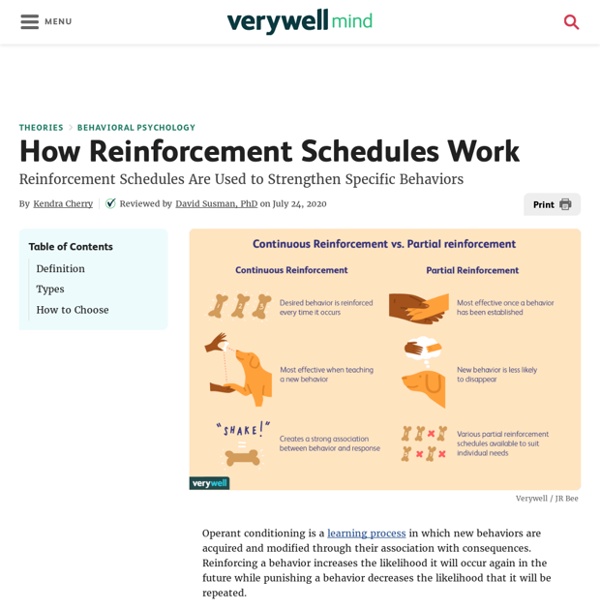What Is a Schedule of Reinforcement?

https://www.verywellmind.com/what-is-a-schedule-of-reinforcement-2794864
Related: Reinforcement and Punishment in Parenting: Teenagers
• parminder_kaur
• Guide for Parents: Reinforcements & Punishments for teenagers
• TMA01 Part01
• geetha009
What kind of discipline works for teens?
The teen years are notoriously challenging for parents. Much like the toddler years, kids sometimes seem intent on doing exactly the opposite of what we ask. And for some of the same reasons: Their job now is to find their sea legs as a person, to shape an identity, to sort out what's important to them. Their integrity would be compromised by simply doing what we ask because we ask it.
How Negative Punishment Works
Negative punishment is an important concept in B. F. Skinner's theory of operant conditioning. In behavioral psychology, the goal of punishment is to decrease unwanted behavior. In the case of negative punishment, it involves taking something good or desirable away to reduce the occurrence of a particular behavior.
In a Nutshell
Positive punishment is a popular concept in parenting. We'll explain what it is and how you can implement it with six examples. Parenting isn't always a walk in the park, and determining the best way to address your child's inevitable poor behavior can be a tricky line to walk.
Discipline for Teens: Strategies and Challenges
When your child becomes a teenager, your parenting role is likely to shift. You may find yourself becoming more of a guide, rather than an enforcer. That’s not to say your child won’t need you to intervene when there are safety issues or that your teen won’t need consequences.
Examples of Positive Reinforcement
Teenagers are young adults who are trying to learn the ways of the world. When they do something great at school or at home or simply make a healthy decision, parents can give them a reward. The reward does not have to be money, but it is a nice way to say "thank you" or "I'm proud of you." Teens need this positive reinforcement because it shows them that they are on the right track.1 It is also a good life lesson that you can pass on: good things happen to good people. When Do Teenagers Deserve a Reward? A teen can earn a reward for positive behavior or by changing negative behavior.1 While you should not feel that you have to "pay" for every good thing your teen does, reinforcement of good behavior will help ensure that it continues.
4 Examples of Negative Reinforcement
Contrary to its name, negative reinforcement isn't a bad thing. Rather than introducing something negative to deter bad behavior (otherwise known as punishment), this theory of parenting removes something negative to encourage good behavior. It's easier to understand when you see some negative reinforcement examples. What Is Negative Reinforcement?
Related:
tc001
•
A guide to reinforcements and punishments for Parents with Teenagers
•
A Parent's Guide to Reinforcement and Punishment



